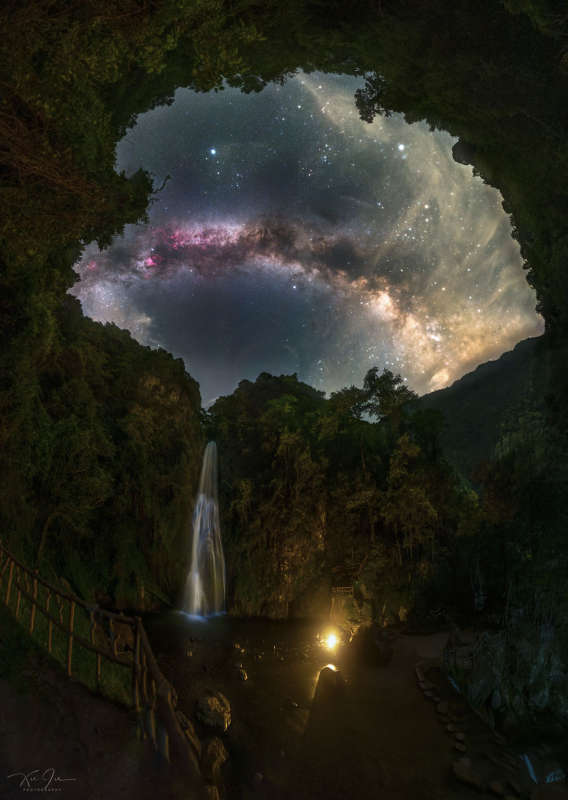
|
Credit & Copyright: Xie Jie
Explanation:
The dream was to capture both the waterfall and the Milky Way together.
Difficulties included finding a good camera location, artificially illuminating the
waterfall and the surrounding valley effectively, capturing the entire scene with
numerous foreground and background shots, worrying that
fireflies would be too
distracting, keeping the camera dry,
and avoiding stepping on a poisonous snake.
Behold the result -- captured after midnight in
mid-July and digitally stitched into a wide-angle panorama.
The waterfall is the picturesque
Zhulian waterfall in the
Luoxiao Mountains in eastern
Hunan Province,
China.
The central band of our
Milky Way Galaxy crosses the sky and shows numerous
dark dust filaments and
colorful nebulas.
Bright stars dot the sky -- all residing in the nearby Milky Way -- including the
Summer Triangle with bright
Vega visible above the
Milky Way's arch.
After capturing all 78 component exposures for you to enjoy,
the photographer and friends
enjoyed
the view themselves
for the rest of the night.
Discovery + Outreach:
Graduate student research position open for APOD
|
January February March April May June July August September October November December |
| ||||||||||||||||||||||||||||||||||||||||||||||||
NASA Web Site Statements, Warnings, and Disclaimers
NASA Official: Jay Norris. Specific rights apply.
A service of: LHEA at NASA / GSFC
& Michigan Tech. U.
Based on Astronomy Picture
Of the Day
Publications with keywords: Milky Way
Publications with words: Milky Way
See also:
- APOD: 2025 July 2 Á Milky Way Through Otago Spires
- APOD: 2025 May 20 Á Milky Way over Maunakea
- APOD: 2025 May 13 Á Gaia Reconstructs a Top View of our Galaxy
- APOD: 2025 May 12 Á Gaia Reconstructs a Side View of our Galaxy
- Galaxies in Space
- APOD: 2025 February 9 Á Milky Way over the Australian Pinnacles
- APOD: 2024 November 24 Á Journey to the Center of the Galaxy
